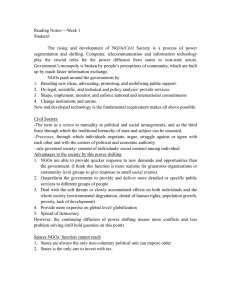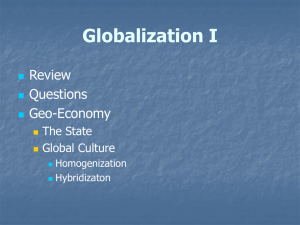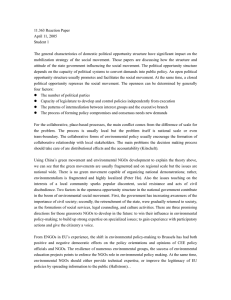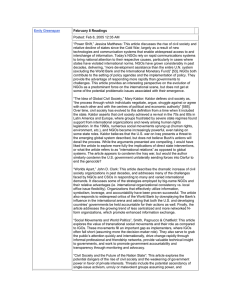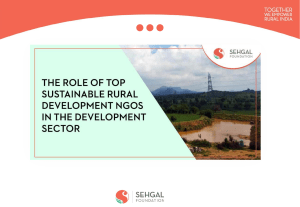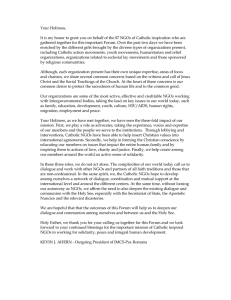Lindsay Kathleen Campbell reaction paper 2/8 Posted: Feb 8, 2005 9:31 AM
advertisement
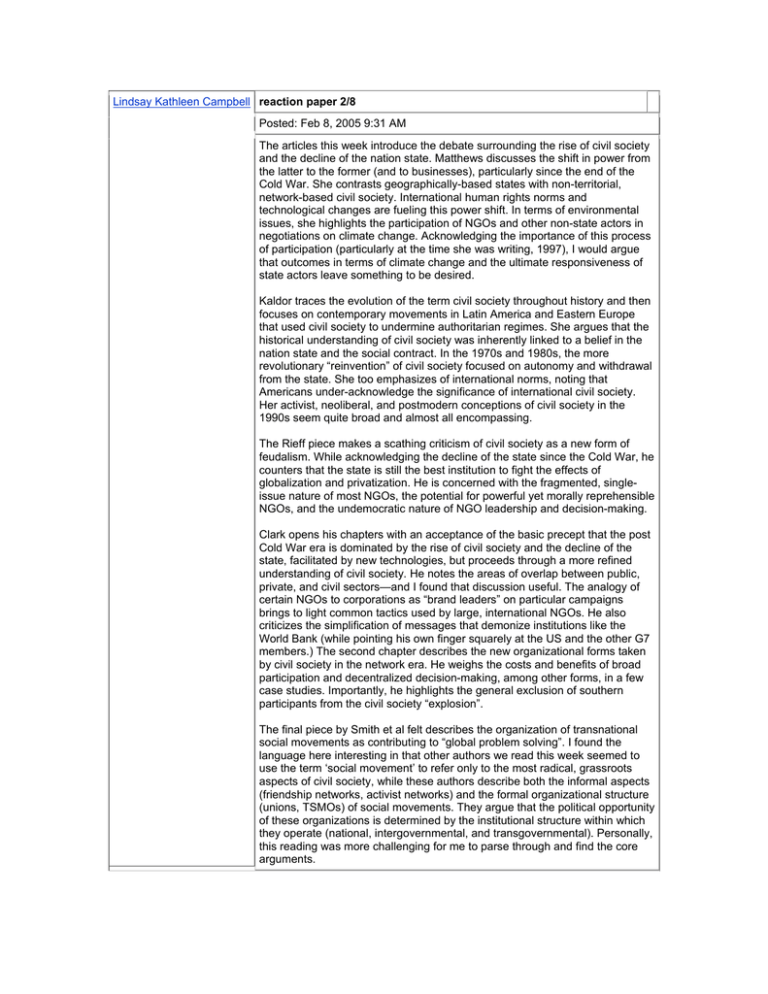
Lindsay Kathleen Campbell reaction paper 2/8 Posted: Feb 8, 2005 9:31 AM The articles this week introduce the debate surrounding the rise of civil society and the decline of the nation state. Matthews discusses the shift in power from the latter to the former (and to businesses), particularly since the end of the Cold War. She contrasts geographically-based states with non-territorial, network-based civil society. International human rights norms and technological changes are fueling this power shift. In terms of environmental issues, she highlights the participation of NGOs and other non-state actors in negotiations on climate change. Acknowledging the importance of this process of participation (particularly at the time she was writing, 1997), I would argue that outcomes in terms of climate change and the ultimate responsiveness of state actors leave something to be desired. Kaldor traces the evolution of the term civil society throughout history and then focuses on contemporary movements in Latin America and Eastern Europe that used civil society to undermine authoritarian regimes. She argues that the historical understanding of civil society was inherently linked to a belief in the nation state and the social contract. In the 1970s and 1980s, the more revolutionary “reinvention” of civil society focused on autonomy and withdrawal from the state. She too emphasizes of international norms, noting that Americans under-acknowledge the significance of international civil society. Her activist, neoliberal, and postmodern conceptions of civil society in the 1990s seem quite broad and almost all encompassing. The Rieff piece makes a scathing criticism of civil society as a new form of feudalism. While acknowledging the decline of the state since the Cold War, he counters that the state is still the best institution to fight the effects of globalization and privatization. He is concerned with the fragmented, singleissue nature of most NGOs, the potential for powerful yet morally reprehensible NGOs, and the undemocratic nature of NGO leadership and decision-making. Clark opens his chapters with an acceptance of the basic precept that the post Cold War era is dominated by the rise of civil society and the decline of the state, facilitated by new technologies, but proceeds through a more refined understanding of civil society. He notes the areas of overlap between public, private, and civil sectors—and I found that discussion useful. The analogy of certain NGOs to corporations as “brand leaders” on particular campaigns brings to light common tactics used by large, international NGOs. He also criticizes the simplification of messages that demonize institutions like the World Bank (while pointing his own finger squarely at the US and the other G7 members.) The second chapter describes the new organizational forms taken by civil society in the network era. He weighs the costs and benefits of broad participation and decentralized decision-making, among other forms, in a few case studies. Importantly, he highlights the general exclusion of southern participants from the civil society “explosion”. The final piece by Smith et al felt describes the organization of transnational social movements as contributing to “global problem solving”. I found the language here interesting in that other authors we read this week seemed to use the term ‘social movement’ to refer only to the most radical, grassroots aspects of civil society, while these authors describe both the informal aspects (friendship networks, activist networks) and the formal organizational structure (unions, TSMOs) of social movements. They argue that the political opportunity of these organizations is determined by the institutional structure within which they operate (national, intergovernmental, and transgovernmental). Personally, this reading was more challenging for me to parse through and find the core arguments.

